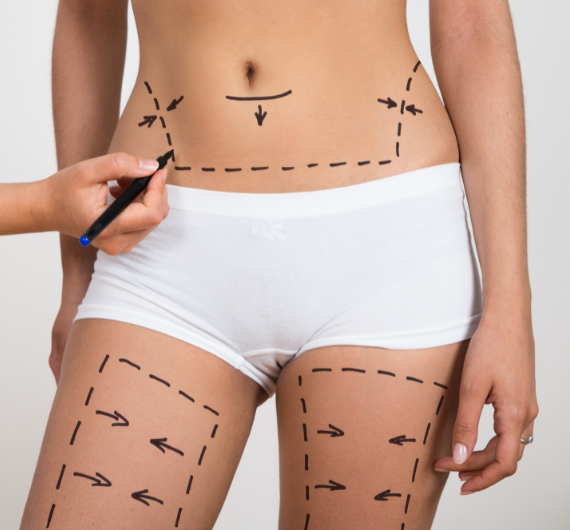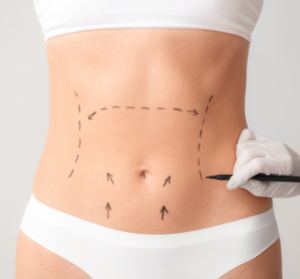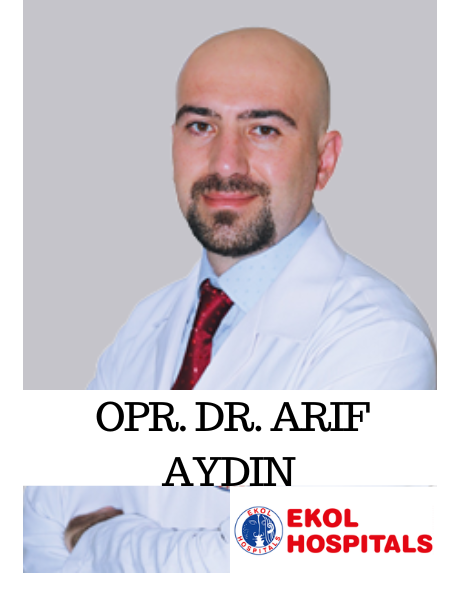
LIPOSUCTION & TUMMY TUCK
Aesthetic
Procedures

Tummy tuck surgery, also known as abdominoplasty, removes excess fat and skin and, in most cases, restores weakened or separated muscles creating an abdominal profile that is smoother and firmer. For individuals who are self-conscious about loose, drooping skin around their midsection or for those with weakened abdominal muscles due to pregnancy or weight loss, tummy tuck surgery may be the best way to achieve a firmer, more youthful figure. Although not considered a weight loss procedure, a tummy tuck can refine a person’s contours when diet and exercise are not enough to eliminate stubborn excess tissues and fat cells A personal consultation with your board-certified aesthetic plastic surgeon will determine the best option for you. Here are some different approaches:
Full Abdominoplasty
In addition to the incision across the lower abdomen, a traditional tummy tuck involves an incision around the navel. Excess skin is removed, muscles are tightened and liposuction may be used to contour the abdomen. This surgery removes skin from above the navel down to the pubic area that has been compromised by pregnancies, genetic laxity or obesity.
Mini-Abdominoplasty
A single incision is made in the pubic area, which will be placed as low as possible and can range from a few inches to the entire span of your abdomen. Through this incision, your surgeon will remove excess skin, tighten slack muscles and possibly use liposuction to further refi ne the area. The ideal candidate for a mini-tummy tuck has laxity and protrusion below the navel. A mini – tummy tuck is usually recommended for those who have always been in fairly good shape but cannot achieve their aesthetic goals with diet and exercise.

Liposuction, sometimes referred to as “lipo” by patients, slims and reshapes specific areas of the body by removing excess fat deposits and improving your body contours and proportion. During liposuction, small, thin, blunt-tipped tubes (cannula) are inserted through tiny cuts in the skin. Fat is suctioned out through these tubes as the doctor moves the tubes around under the skin to target specific fat deposits.
- Thighs
- Hips and buttocks
- Abdomen and waist
- Upper arms
- Back
- Inner knee
- Chest area
- Cheeks, chin and neck
- Calves and ankles
After the procedure, the area of the body that was treated is firmly wrapped to help reduce swelling, bruising, and pain. Elastic bandages and tape, support hose (such as those used to treat varicose veins), a special girdle, or another type of firm fitting garment may be used, depending on which part of the body was treated. You may have to wear the compression garment or wrap for 3 to 4 weeks. Expect a lot of bruising and swelling for at least the first 7 to 10 days. Fluid may drain from the incision sites for several days. You may be given antibiotics to reduce the risk of infection.
Most people are able to get up and move around as soon as the treatment is finished and after the effects of the anesthesia and any sedation have worn off. You can return to your normal activities as soon as you feel comfortable, although this may take several days to a few weeks. Most people can return to work within a few days. Recovery may take longer if large areas were treated.
The main purpose of liposuction is to reshape one or more areas of your body, not to reduce body weight. Liposuction is typically used on “problem” areas that have not responded well to diet and exercise. These areas are often on the outer thighs and hips on women and the waist and back on men. The face, neck, abdomen, back, buttocks, legs, and upper arms are all commonly treated areas. Liposuction is sometimes used in combination with other cosmetic surgery procedures, such as a “tummy tuck” (abdominoplasty), breast reduction, or face – lift. Liposuction may also be used to treat certain medical conditions, including:
- Benign fatty tumors (lipomas).
- Abnormal enlargement of the male breasts (gynecomastia or pseudogynecomastia).
- Problems with metabolism of fat in the body (lipodystrophy).
- Excessive sweating in the armpit area (axillary hyperhidrosis).
We Can Help You
We offer:-
-English speaking consultation
-Face to face, zoom or alternative calls with the appointed surgeon
-24/7 Assistance and care during your stay
-Advice and assistance on aftercare
-We can arrange flight and accommodation




